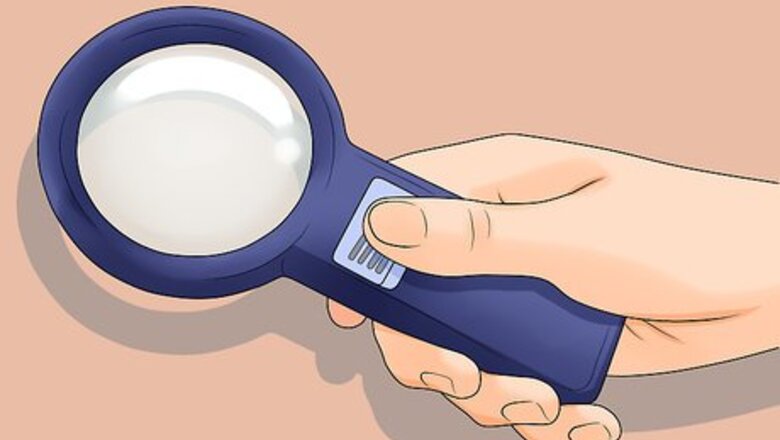
views
Examining Under a Magnifying Lens
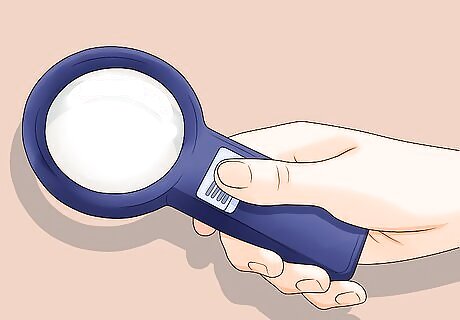
Use an appropriate magnifying lens for your piece. Magnifying glasses come in a variety of sizes with a number of different special features. For most bone or ivory pieces, a standard strength, handheld magnifying glass works well, letting you see enough detail to distinguish between the two materials and control how close you are able to examine the piece. Handheld magnifying glasses can be purchased online or at some specialty and hobby retailers. You may also be able to find a handheld magnifying glass at some home décor shops. You can also use a microscope, but these tend to be more expensive than a magnifying glass, especially if your bone or ivory piece is large.
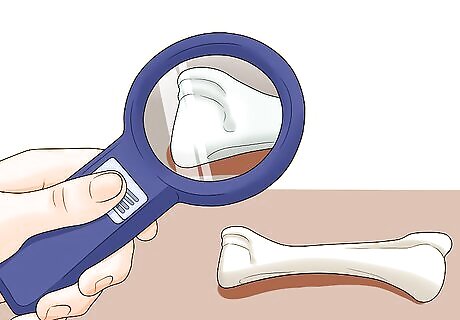
Hold the magnifying glass over the piece. Hold the piece in your hand or place it on a flat surface. Hold your handheld magnifying glass over the piece, starting several inches away. Move the magnifying glass closer to the piece as needed until the details come into focus and you are able to see the intricate markings on the piece. If you are using a microscope, set it up according to the instructions and focus the lens until the details on the piece become sharp and clear.

Look for pores to confirm the item is bone. Once the details on the piece become visible through your magnifying lens, examine closely to assess if the surface of the piece is covered with lines or pores. If the piece is porous, it is almost certainly bone. Pores will look like very small dots or holes covering the surface of your piece.
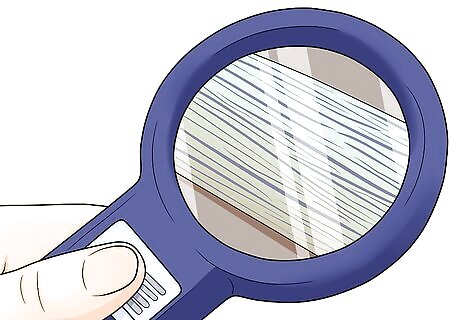
Examine for lines to determine that your piece is ivory. When you examine your piece under a magnifying glass, if you are looking at ivory, there will be lines on the surface. The lines on genuine ivory can appear in a variety of ways, including straight, cross-hatched, or in a circular motion.
Checking for Authenticity
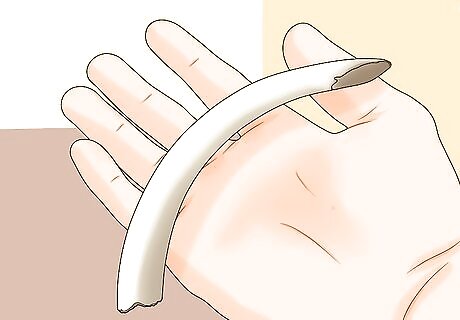
Hold the piece in your hand to assess the weight. Ivory and some types of bone are heavy and dense in weight, comparable to a similarly sized billiard ball. If the piece feels lightweight, you can eliminate the possibility that it's ivory, though it could be bone. Bone and ivory can weigh the same. If a piece feels solid and heavy, that doesn't necessarily mean it's ivory. This does, however, serve as an indicator that it might be one of the two. If you're unsure whether the item feels appropriately solid, use a scale to weigh it. While the weight of different types of ivory can vary, popular types of ivory, such as tusks, generally weigh about 1.4 pounds (0.64 kg) per 1 inch (2.5 cm) in length.

Examine the piece under a black light. Find and purchase a black lightbulb (also referred to as an ultraviolet light) or a black light flashlight. If using a lightbulb, screw the bulb into a lamp, preferably in a room with little natural light. Turn on the black light lamp or black light flashlight. Turn out any other lights, making the room as dark as possible. With only the black light on, examine the piece to assess what color it illuminates. Genuine ivory and bone both appear bright white under a black light, whereas synthetic materials tend to absorb more light and appear dull. While it is rare, there are some replica or synthetic materials that might also appear white under a black light, so you will need to perform multiple tests to be sure that your piece is authentic bone or ivory. Confirm materials through inspection. "We had this piece we thought might be antique ivory, but we weren't sure. When we looked at it under the magnifying glass, we didn't see the smooth lines ivory has. Instead, we saw tons of tiny pores, which told us for sure it was 19th-century bone. Checking for those pores was so helpful!" - Adam D. Gain insight on distinguishing ivories. "I've always wondered how you can tell the difference between ivory and bone. This article really helped explain it. Seeing the zoom-in pics of the lines on ivory versus the pores on bone gave me the info I was looking for. Now, whenever I look at antiques, I'll know how to figure out what they're made of." - Wendy K. Ensure proper handling of valuables. "My son just inherited some ivory antiques from his grandpa. I wanted to make sure we know if they're real ivory and if we can take care of them right. The stuff about weight, black lights, and legal issues, let me confirm they're authentic so we can preserve these heirlooms." - Carl Mitchell Identify materials cautiously. "My sister was diagnosed with Alzheimer's recently. Now, I have to go through the huge antique collection in her house. Using the magnifying glass and checking for smoothness, like the article said, helped me guess some heavy pieces might be ivory. But I'll get them checked out since I don't want to risk getting tricked by dishonest antique dealers." - Sandy E. We want to hear from you! Advice from our readers makes our articles better. If you have a story you’d like to share, tell us here.
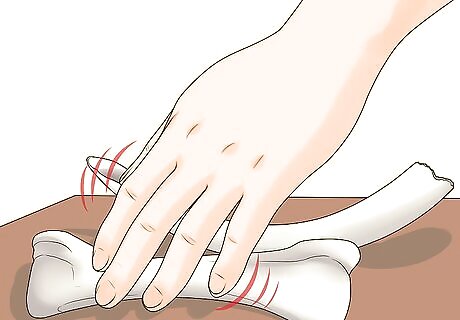
Feel the surface for smoothness and hardness. Run your finger over the piece to assess how smooth the surface is, and how durable it feels. Ivory, along with many types of bone, are very smooth to the touch, and feel substantial, hard, and durable. If the surface is rough or feels soft or flimsy, it is very unlikely that your piece is genuine ivory or bone. Although some types of bone can feel as smooth as ivory, most do not. Bone is porous and therefore, tends to feel slightly rougher than ivory. If your piece feels buttery smooth to the touch, this may be an indication that the item is ivory, but you will still need to do additional testing to confirm. While bone can be as durable as ivory, this is not always the case. You may be able to easily break a small bone, for example, but it is unlikely that you would be able to break a small piece of ivory. When examining your piece for hardness, use extra care, as synthetic and bone pieces may be easily damaged.

Look for natural yellowing due to age. Unlike synthetic materials (which are often made to hold their color), both ivory and bone naturally change color as they age. While both ivory and bone can age with a yellowish tint, bone may also turn a slight brown, red, white, or green. If your piece has an aged yellow tint, this may indicate that it is ivory or bone. Some faux ivory or bone pieces are manufactured with a yellowish tint in order to appear authentic. As a result, additional testing is necessary to confirm that your piece is either bone or ivory, as well as to determine which of these two materials it is.


















Comments
0 comment